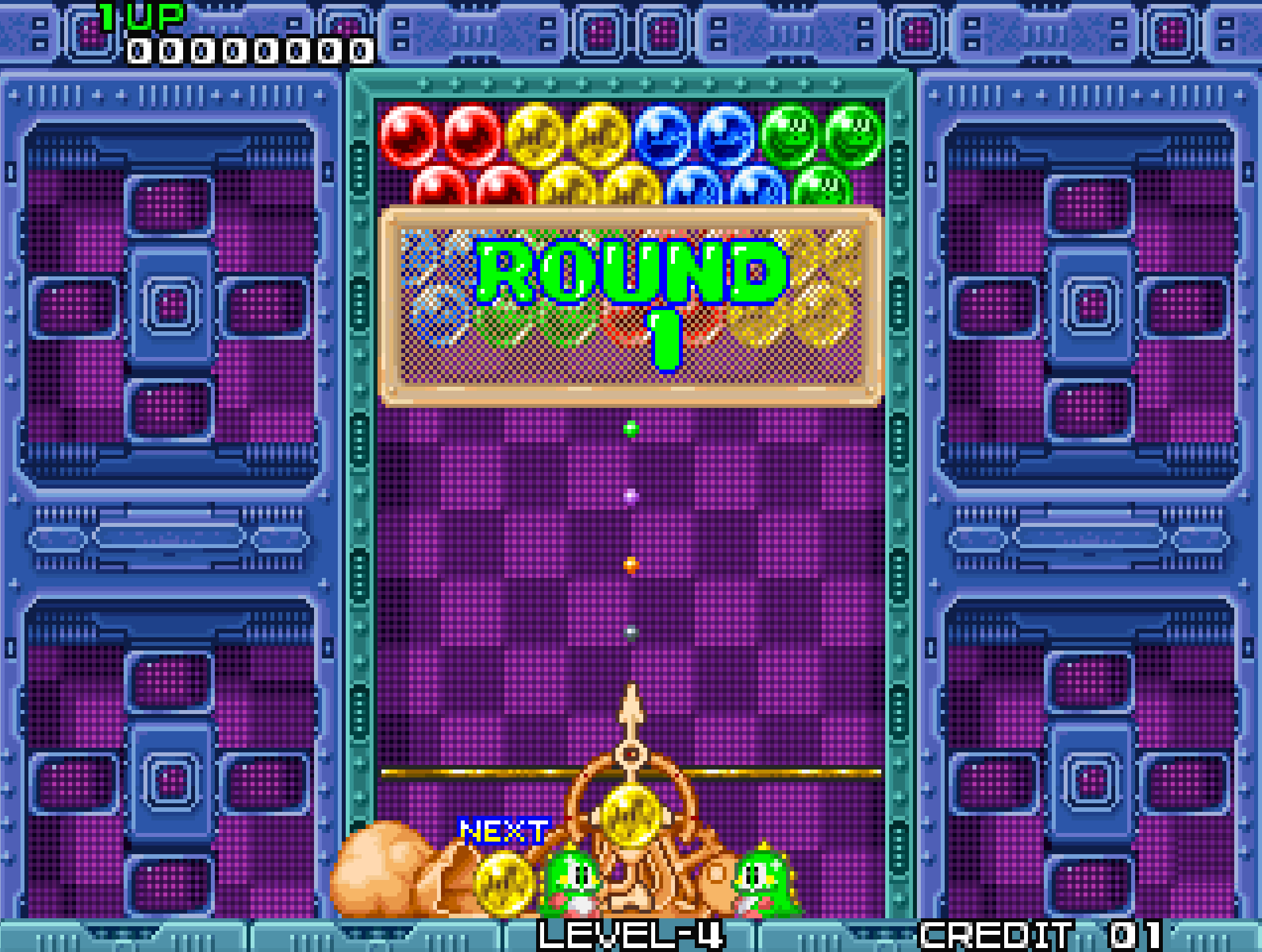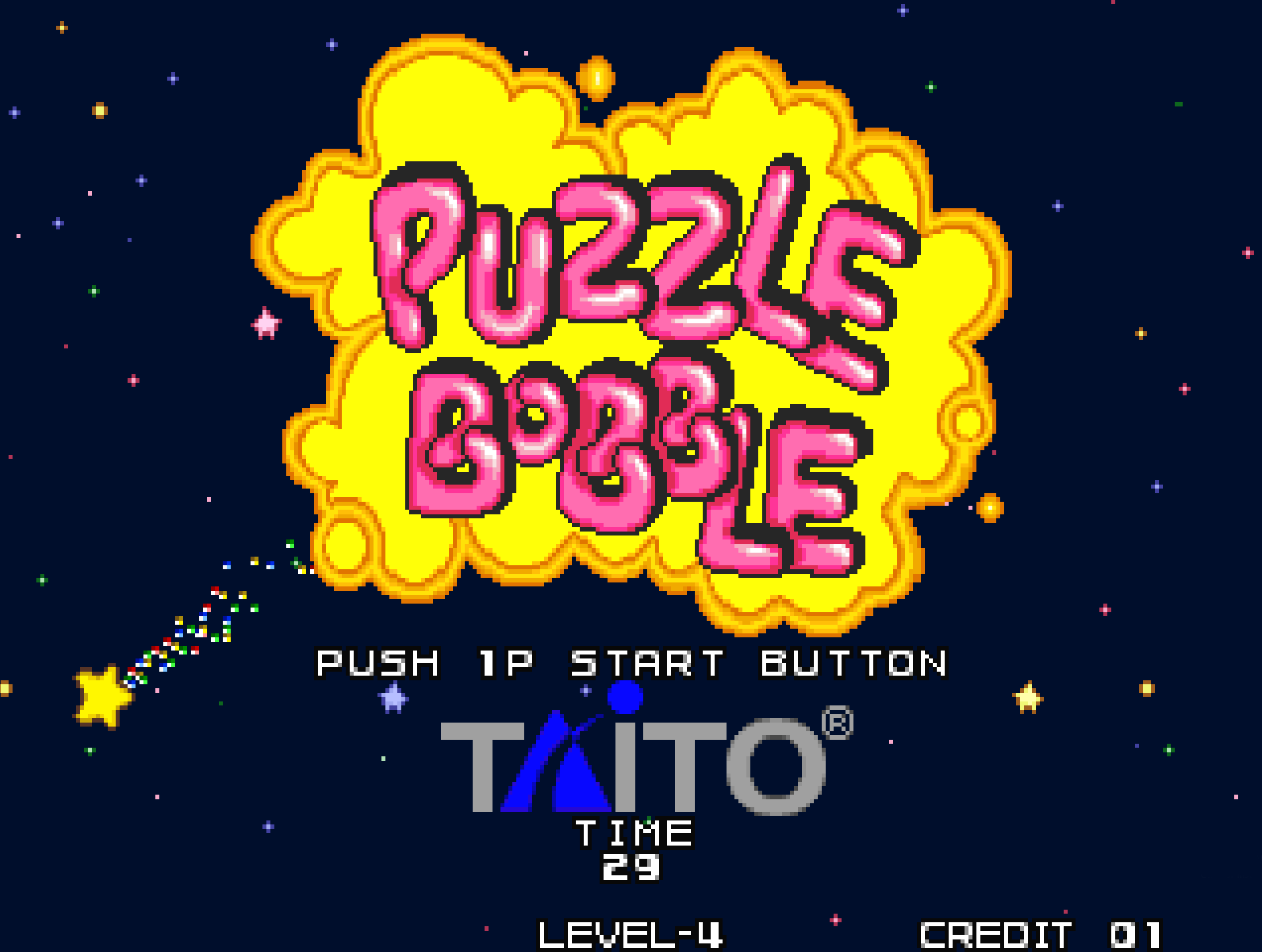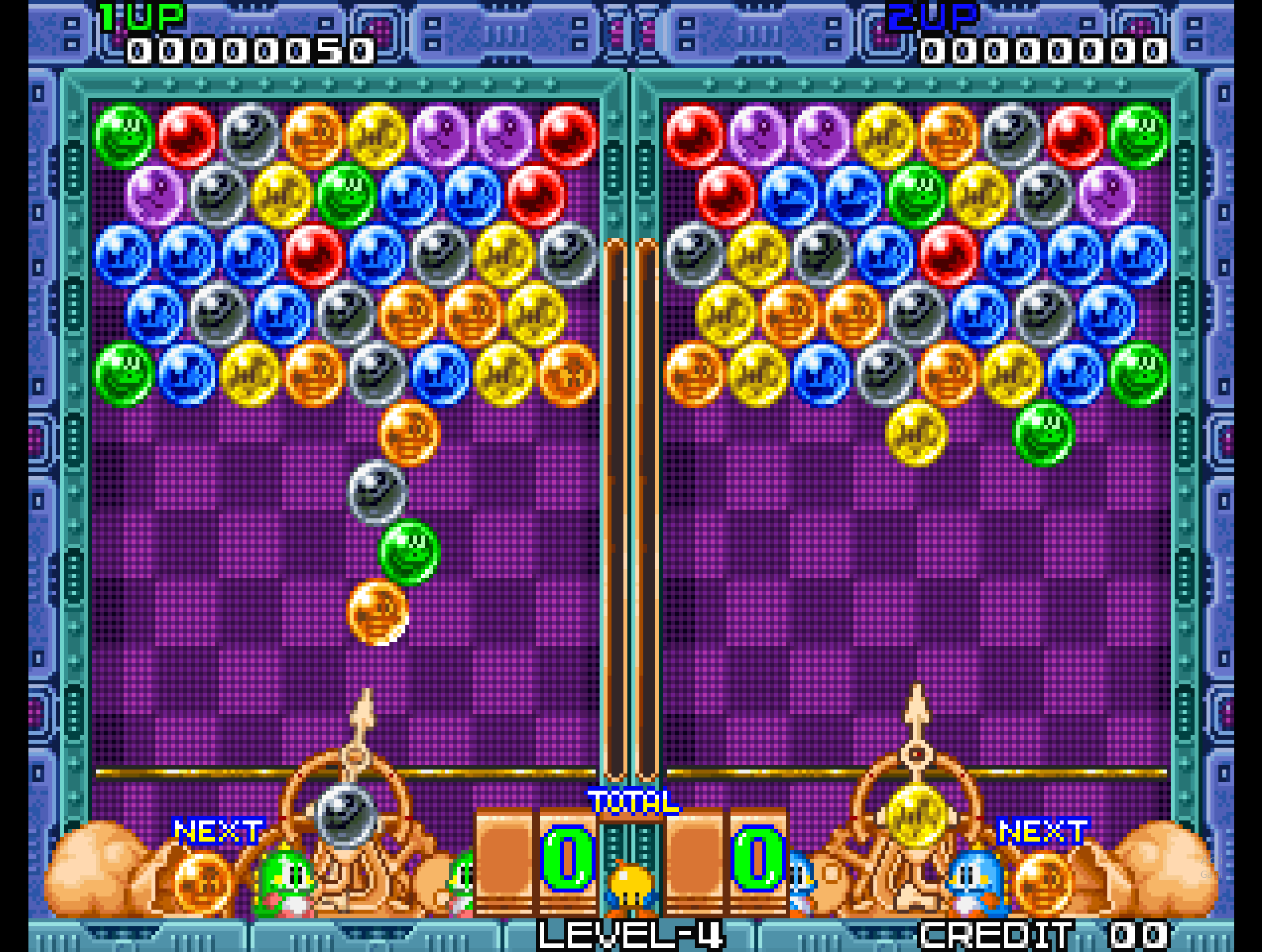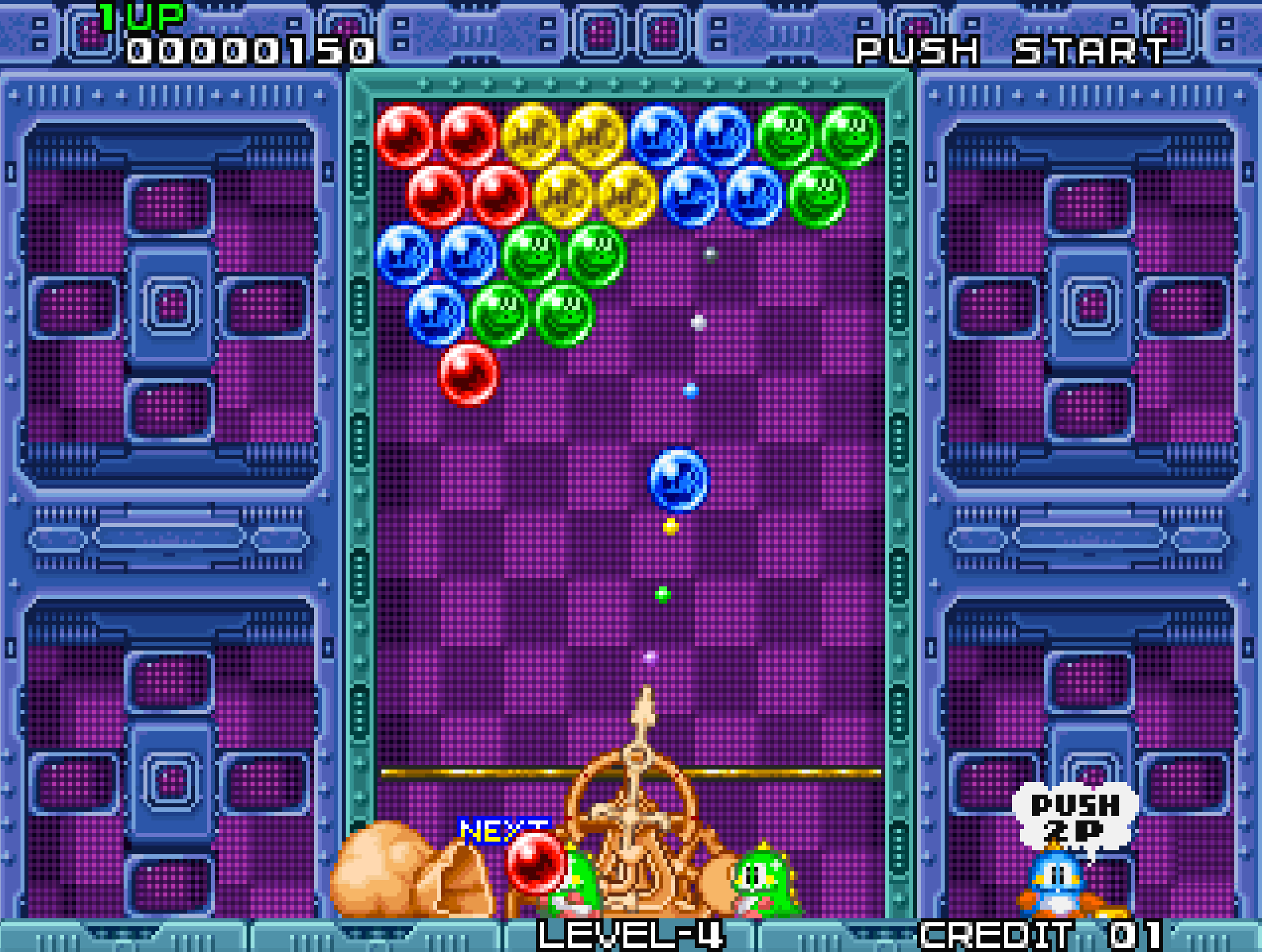Introduction
Released in 1994 by Taito, Puzzle Bobble (known as Bust-A-Move in North America) is a match-3 puzzle arcade game that spun off from the beloved Bubble Bobble series. Featuring the iconic characters Bub and Bob, the game replaced platforming with a fresh, bubble-shooting puzzle format. With its simple mechanics, cheerful visuals, and addictive gameplay, Puzzle Bobble became one of the most enduring puzzle franchises in arcade history.

Development and History
- Developer: Taito
- Publisher: Taito
- Release Date: 1994
Taito developed Puzzle Bobble using characters and sprites from Bubble Bobble (1986), giving fans of the earlier game something both familiar and entirely new. The game was designed to be instantly accessible but deceptively strategic, and it debuted on Taito’s F3 System hardware.
The game’s visual charm and catchy music helped it stand out in arcades dominated by fighters and shooters. It quickly found a broad audience, appealing to both casual and competitive players.

Gameplay Video
Gameplay and Mechanics
Core Gameplay
Players control a fixed-position cannon at the bottom of the screen and launch colored bubbles upward to match and clear clusters.
- Match-3 Mechanic: Connecting three or more bubbles of the same color causes them to pop.
- Ricochet Physics: Bubbles can bounce off the side walls, adding skill and strategy.
- Stage Progression: Levels become progressively harder with more complex patterns and tighter time limits.
- Two-Player Mode: Competitive play adds pressure by sending extra bubbles to an opponent’s screen.
Challenges
- Color Management: Planning shots to deal with future colors is key to survival.
- Falling Ceiling: The ceiling gradually lowers, increasing difficulty and forcing quicker decisions.
- Chain Combos: Skilled players can trigger bubble cascades for massive clears and competitive advantage.

Cultural Impact and Legacy
- Global Reach: Widely successful in both Japan and Western arcades.
- Home Ports: Released on nearly every major console including Neo Geo, SNES, PlayStation, and Sega Saturn.
- Franchise Success: Spawned dozens of sequels and spin-offs under both the Puzzle Bobble and Bust-A-Move names.
- E-Sports Appeal: Inspired competitive puzzle scenes long before Tetris-style tournaments became mainstream.

Fun Facts
- Dual Branding: Known as Puzzle Bobble in Japan and Bust-A-Move in the West.
- Bubble Bobble Link: Bub and Bob are the same dinosaurs from Taito’s 1986 hit.
- Neo Geo Version: Also released for SNK’s MVS system, allowing widespread arcade distribution.
- Voice Samples: The original arcade version included minimal speech—later versions added energetic voiceovers.

Conclusion
Puzzle Bobble proved that arcade games didn’t need explosions or violence to captivate players. With satisfying physics, clever level design, and endless replayability, it remains a shining example of puzzle gameplay done right—and a cornerstone of Taito’s enduring legacy.

